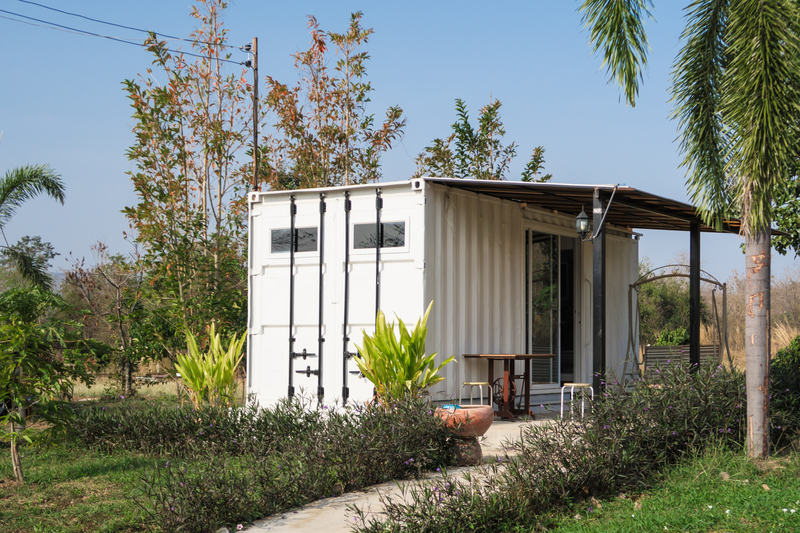Ensuring the Safe Handling and Disposal of Used PPE: A Comprehensive Guide
Personal Protective Equipment (PPE) has become a fundamental safeguard for industries and individuals, especially during pandemics and hazardous environments. However, the safe handling and disposal of used PPE is just as crucial as its proper use. Incorrect disposal can contaminate the environment and spread infections, making safe PPE management indispensable. This article delves into effective strategies and best practices for managing, handling, and disposing of used PPE to protect people and the planet.

Why Is Safe Handling and Disposal of Used PPE Important?
Every day, millions of PPE items like masks, gloves, face shields, aprons, and gowns are discarded worldwide. Improper used PPE disposal can lead to:
- Infection transmission due to contact with contaminated materials
- Environmental pollution from single-use plastics
- Legal implications for organizations not adhering to regulations
- Risks to waste-management workers and the general public
Ensuring the safe handling and disposal of PPE is therefore not just a matter of hygiene, but also of public responsibility and environmental stewardship.
Types of PPE and Their Associated Risks
It's important to understand the different kinds of PPE and how each poses unique disposal challenges.
- Masks and Respirators: Contain respiratory droplets and airborne pathogens.
- Gloves: Carry traces of chemicals or biological contaminants.
- Protective Clothing and Gowns: Exposed to bodily fluids or chemical spills.
- Face Shields and Goggles: Touched frequently, accumulating germs on surfaces.
Handling each type of used PPE requires awareness of the specific risks involved, proper decontamination where possible, and safe disposal practices.
General Principles of Safe Handling of Used PPE
To minimize hazards, institutions and individuals must adopt safe handling of used PPE:
- Never reuse disposable PPE. If marked for single-use, disposal after use is mandatory.
- Remove PPE correctly. Learn the recommended technique to avoid contamination:
- Remove gloves first, then gown, goggles, and finally the mask.
- Avoid touching the front or contaminated surfaces.
- Hand hygiene is essential. After removing used PPE, wash hands with soap and water or use an alcohol-based sanitizer.
- Minimize handling. Do not carry used PPE through clean areas or shake out garments, which may spread contaminants.
For healthcare workers and those in high-risk sectors, regular training on safe PPE removal and disposal is vital for ongoing safety.
Regulations and Guidelines for Used PPE Disposal
Globally, governing bodies like the World Health Organization (WHO) and national regulatory agencies have set forth guidelines for PPE disposal to protect public health. Key requirements include:
- Segregating used PPE at the point of removal from the user's body.
- Disposing of PPE in color-coded, leak-proof containers or bags (often yellow or red for infectious waste).
- Sealing containers before removal for final disposal to prevent leaks and exposure.
- Transporting PPE waste via designated routes and vehicles to authorized disposal facilities.
- Maintaining documentation for waste handling, especially in healthcare settings.
Compliance is not just about ticking boxes--it's about ensuring the safety of cleaning staff, waste handlers, and the broader community.
Legal Implications of Improper PPE Disposal
Non-compliance with PPE waste disposal regulations can result in hefty fines, business shutdowns, and increased liability in the event of an outbreak or contamination event. Managing used PPE safely is a legal necessity for all organizations.
Best Practices for the Safe Disposal of Used PPE
Good PPE disposal protocols help reduce infection risks and environmental impact. Here are best practices to follow:
1. Segregate Contaminated PPE Immediately
- Place used PPE in dedicated bins/bags as soon as it is removed.
- Use touch-free bins with lids to limit contact.
- Never overfill disposal containers; this reduces the risk of exposure.
2. Use Clearly Labeled, Leak-Proof Bags/Containers
- Bags/containers should be strong enough to avoid tears and leaks.
- Color-code according to guidelines (e.g., yellow or red for infectious waste).
- Ensure biohazard signage is visible.
3. Secure and Store PPE Waste Safely
- Seal bags with cable ties or knot before transfer.
- Store used PPE in a designated area away from clean supplies and public access areas.
4. Arrange Timely Collection and Transport
- Set a regular schedule for collection by authorized waste management services.
- Ensure handlers wear appropriate PPE.
- Disinfect bins/containers after each use.
5. Final Disposal at Authorized Facilities
- PPE waste should be incinerated or processed at licensed facilities equipped to handle hazardous waste.
- Never mix PPE waste with regular garbage or recyclables.
6. Community and Home Use Disposal
- For non-infectious household PPE waste (e.g., masks, gloves):
- Place in a separate bag, tie securely, and dispose of in designated waste.
- Wash hands thoroughly after handling used PPE, even at home.
Sustainable Approaches to PPE Handling and Disposal
With the wariness of environmental pollution rising, sustainable solutions for used PPE disposal are in demand. Consider these alternatives:
- Recycling: Some PPE types can be recycled through specialized programs that process and repurpose materials like polypropylene from masks and gowns.
- Reusable PPE: Where possible, substitute single-use items with reusable, washable PPE that meets safety standards.
- Biodegradable PPE: Support and source biodegradable PPE products to minimize landfill waste.
Note: Always follow safe handling procedures when cleaning or laundering reusable PPE to prevent inadvertent contamination.
Challenges with Sustainable PPE Disposal
While recycling and reusing are environmentally friendly, not all used PPE can be safely recycled due to contamination risk. Establishing dedicated collection points and working with certified recycling partners can make a difference. The development of biodegradable PPE is also ongoing, and adoption rates are expected to increase in the coming years.
Protecting Waste Management Workers
Waste handlers are on the frontlines of used PPE disposal. Protect them by:
- Providing comprehensive training on safe waste handling and emergency procedures.
- Ensuring access to adequate PPE, including gloves, masks, and face shields.
- Encouraging prompt reporting and management of accidental spills or exposures.
- Implementing vaccination programs (e.g., for hepatitis B) for all waste handling staff.
- Rotating shifts to reduce prolonged exposure.
Educating Employees and the Public on Safe PPE Disposal
A robust PPE disposal policy relies on effective communication strategies. Here's how to boost compliance:
- Distribute clear, easy-to-read instructions near all PPE donning and doffing areas.
- Use visual aids (posters, infographics) that illustrate proper removal and disposal steps.
- Run regular training sessions for staff and contractors.
- Engage the public via social media, newsletters, and public service announcements about the importance of disposing of PPE responsibly.
- Encourage feedback to improve procedures and address emerging challenges.
Case Study: PPE Waste Management During the COVID-19 Pandemic
The COVID-19 pandemic highlighted the importance of proper PPE disposal. Hospitals, airports, and communities faced a surge in contaminated PPE waste. Effective measures put in place included:
- Rapid scaling up of PPE waste collection points.
- Frequent disinfection and collection intervals.
- Staff training under emergency guidelines.
- Government-issued advisories on PPE waste segregation at home and in public spaces.
Countries that enforced strict PPE handling and disposal protocols experienced lower infection rates among waste management workers and less environmental contamination.

Key Takeaways for Ensuring Safe Handling and Disposal of Used PPE
- Always use PPE as intended and dispose immediately after use.
- Follow established protocols for removal, segregation, and disposal to minimize exposure risks.
- Protect those who handle PPE waste by providing training, the right equipment, and health monitoring.
- Pursue sustainable disposal methods by opting for recyclable and reusable PPE where possible.
- Stay informed and compliant with current local and international regulations.
Proper management of used PPE is a collective responsibility that supports workplace safety, public health, and environmental sustainability.
Frequently Asked Questions (FAQ)
- Can I recycle used PPE?
Some types of PPE, such as certain masks and shields, can be recycled through specialty programs. However, most contaminated PPE must be disposed of as hazardous or infectious waste to avoid health risks. - Is it safe to burn used PPE at home?
No. Burning PPE at home can release toxic fumes and is not environmentally safe. Always use authorized disposal facilities for hazardous waste. - What do I do if I accidentally touch contaminated PPE?
Wash your hands thoroughly with soap and water immediately. Avoid touching your face and disinfect any surfaces you may have contacted. - How can organizations reduce PPE waste?
Consider using reusable PPE where feasible, train staff on proper PPE use, and engage in take-back or recycling programs for suitable items.
Conclusion: Safeguarding Health and the Environment Through Responsible PPE Disposal
In conclusion, the safe handling and disposal of used PPE is an essential practice for every organization and individual. Effective management protects workers, the public, and ecosystems from harm. By following regulations, best practices, and community awareness initiatives, we can collectively reduce infection risks and environmental hazards. Embrace sustainable alternatives where possible--but never compromise on biosafety. Remember, responsible PPE disposal is everyone's responsibility.